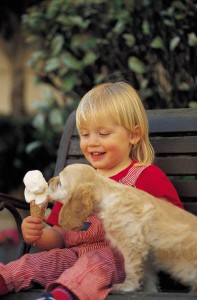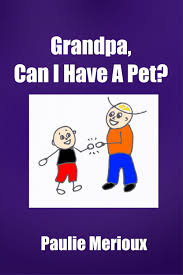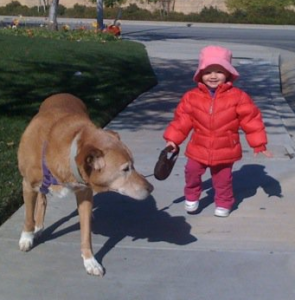The Magic of Pets
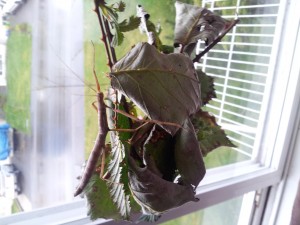 Having a pet is the dream and wish of many kids. Pets can be common or unusual, inside or outside. Sometimes as adults, we may put pets in a list of importance, starting with dogs or cats, then maybe hamsters, gold fish, and on down to frogs, caterpillars, and bugs. But kids have their own ideas about what to have for pets. A family in our neighborhood has a pet stick bug that lives in an old aquarium. It’s name is Branchy. In a way, choosing a pet is practice for being able to choose friends. Together, kids and pets play.
Having a pet is the dream and wish of many kids. Pets can be common or unusual, inside or outside. Sometimes as adults, we may put pets in a list of importance, starting with dogs or cats, then maybe hamsters, gold fish, and on down to frogs, caterpillars, and bugs. But kids have their own ideas about what to have for pets. A family in our neighborhood has a pet stick bug that lives in an old aquarium. It’s name is Branchy. In a way, choosing a pet is practice for being able to choose friends. Together, kids and pets play.
 As kids develop a bond with their pets, they also learn to be gentle and caring. Having a pet comes with responsibilities like cleaning, feeding, and exercising. Children also learn to think not just of what they themselves want but the wants and needs of their pets. Does the kitty like to chase a stick? No, it likes to chase a piece of string. Does the dog like to watch tv? No, it likes to go for a walk, (and eat icecream).
As kids develop a bond with their pets, they also learn to be gentle and caring. Having a pet comes with responsibilities like cleaning, feeding, and exercising. Children also learn to think not just of what they themselves want but the wants and needs of their pets. Does the kitty like to chase a stick? No, it likes to chase a piece of string. Does the dog like to watch tv? No, it likes to go for a walk, (and eat icecream).
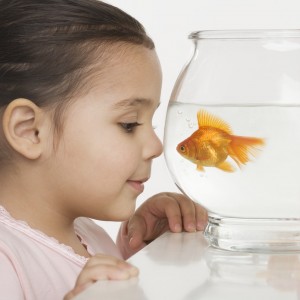 The presidents of major unions should have the negotiating skills of kids as they try and talk parents into getting a pet. But there are lots of reasons why some pets are not possible, such as allergies, being in a place that doesn’t allow them, expense, and being away from home all day.
The presidents of major unions should have the negotiating skills of kids as they try and talk parents into getting a pet. But there are lots of reasons why some pets are not possible, such as allergies, being in a place that doesn’t allow them, expense, and being away from home all day.
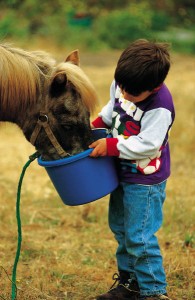 Pets, in all shapes, colors, sizes, and kinds, become part of children’s family. Not only do kids become attached to their pets, but they learn about responsibility, and controlling their impulses and actions so they do not hurt their pets. This is the beginning of empathy for others. There’s some basic science too, about what pets eat, how they move, creating mini-environments, and more. Even though animals do not communicate in words, they encourage children’s language as kids talk to their pets, explain what their pets are doing, and tell others about them.
Pets, in all shapes, colors, sizes, and kinds, become part of children’s family. Not only do kids become attached to their pets, but they learn about responsibility, and controlling their impulses and actions so they do not hurt their pets. This is the beginning of empathy for others. There’s some basic science too, about what pets eat, how they move, creating mini-environments, and more. Even though animals do not communicate in words, they encourage children’s language as kids talk to their pets, explain what their pets are doing, and tell others about them.
Are pets so magical for kids because they both have such a deep capacity for love, as well as for play? Does your child have a pet?

